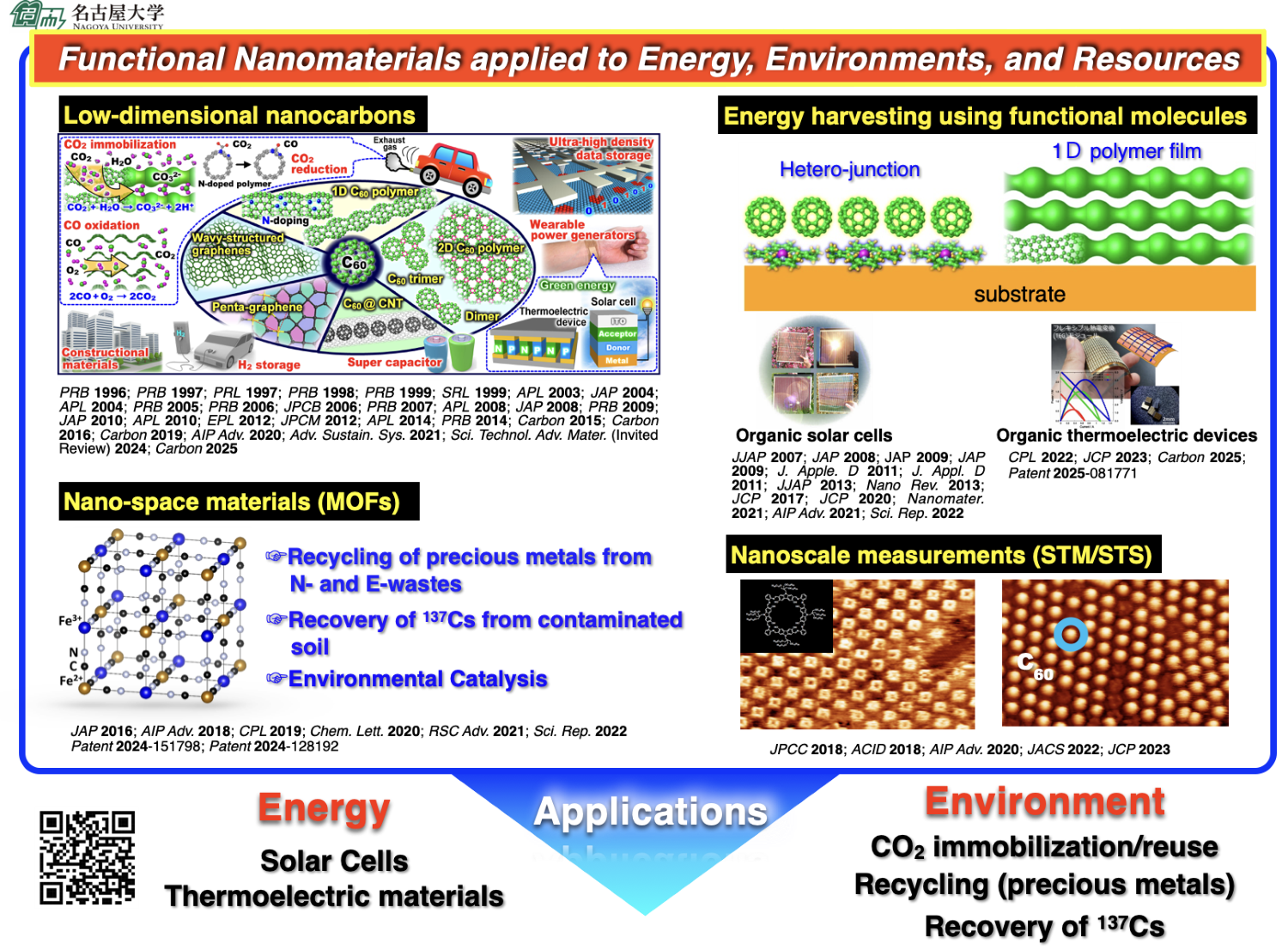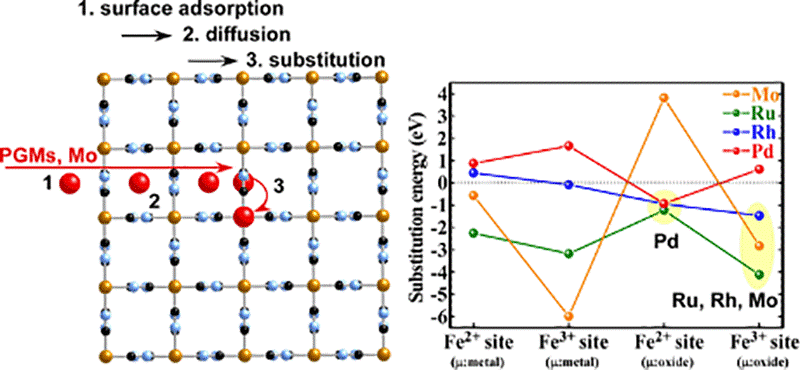Research
Science and engineering of organic/inorganic/nanospace materials applied to environmental and energy issues -Aiming for a sustainable future society-
In order to realize a sustainable society, it is necessary to maintain economic activity while reducing carbon dioxide (ultimately zero emissions), which give a priority to both the environment and energy. However, prioritizing the environment (reducing carbon dioxide emissions) will reduce economic activities (energy consumption), while prioritizing economic activities will adversely affect the environment (increase in carbon dioxide emissions). In other words, the two are inextricably linked trade-offs. In order to solve this problem, Japan formulated the "Energy and Environmental Innovation Strategy 2050 (NESTI2050)" based on the Science and Technology Basic Plan, and industry, academia, and government are working together.
Based on NESTI2050, our group aims to break through the above trade-off relationship by applying functional materials to the environment and energy. Specifically, we are working on organic solar cells, organic/inorganic thermoelectric conversion devices, and energy-saving devices from both experimental and theoretical perspectives on the basis of nanomaterials science, energy conversion science, physical science, computational science, electrochemistry, and materials informatics (CO2 immobilization and conversion to valuable materials, recycling of precious metals, disposal of nuclear wastes, hydrogen fuel, environmental purification, etc).

Recent achievements
High-efficiency recovery of platinum group elements using Prussian blue with nanospaces –High-level radioactive waste liquid vitrification process and expectation for rare metal recycling application–
A group led by Professor Jun Onoe of Nagoya University's Graduate School of Engineering and Professor Kenji Takeshita (currently a specially appointed professor) of Tokyo Institute of Technology found that Prussian Blue (PB), which is known to be a paint material, exhibits a high uptake performance for Ruthenium, Rhodium, and Palladium ions, which are known as rare metals, by substituting with Iron ions of PB skeleton.
This achievement is expected not only to solve the problem of the vitrification process for high-level radioactive waste but also to improve the multi-stage and complex current processes adopted for rare metal recycling. The results of this research were published in Scientific Reports (https://www.nature.com/articles/s41598-022-08838-1). This research was financially supported by the Ministry of Education, Culture, Sports, Science and Technology and by Chubu Electric Power.
